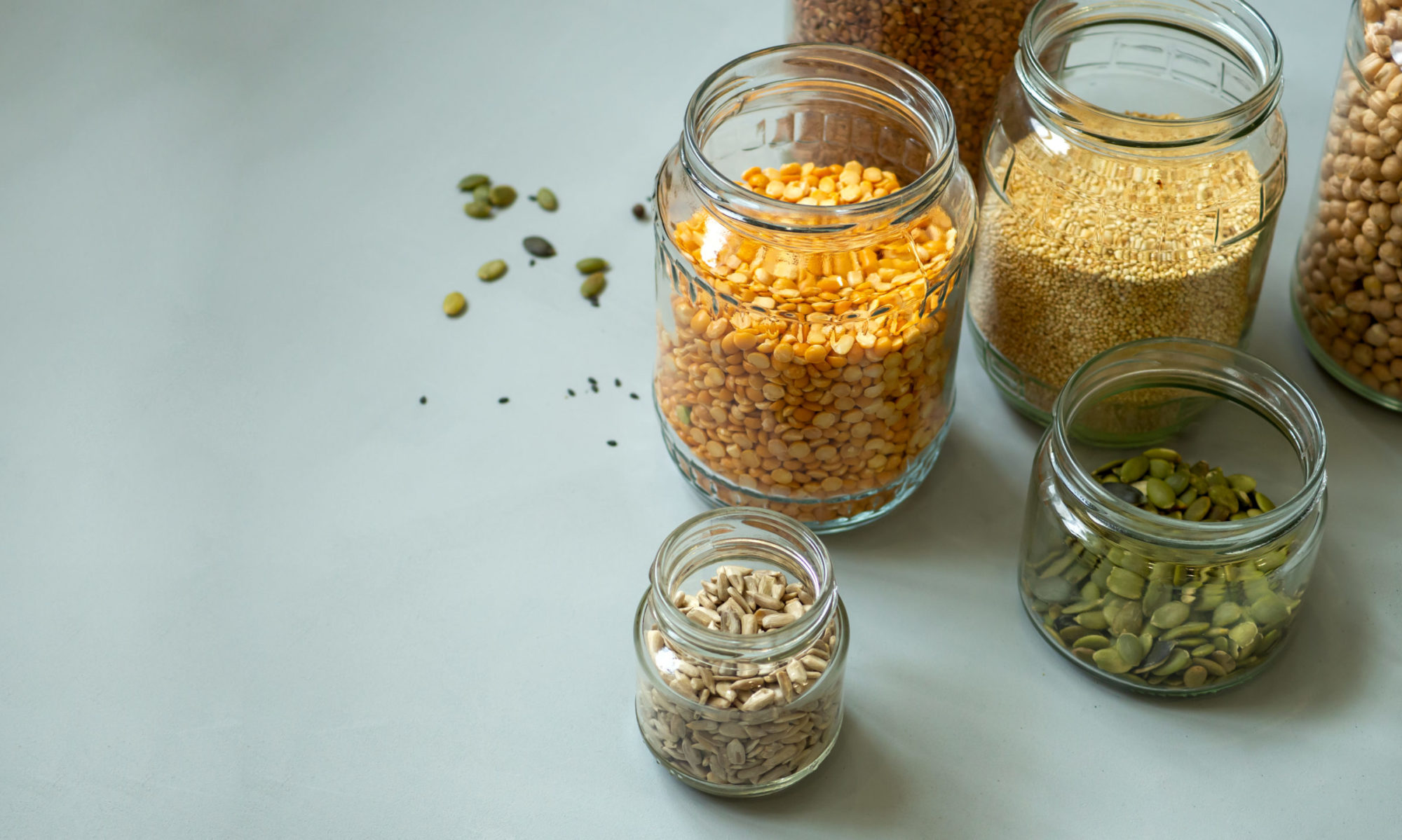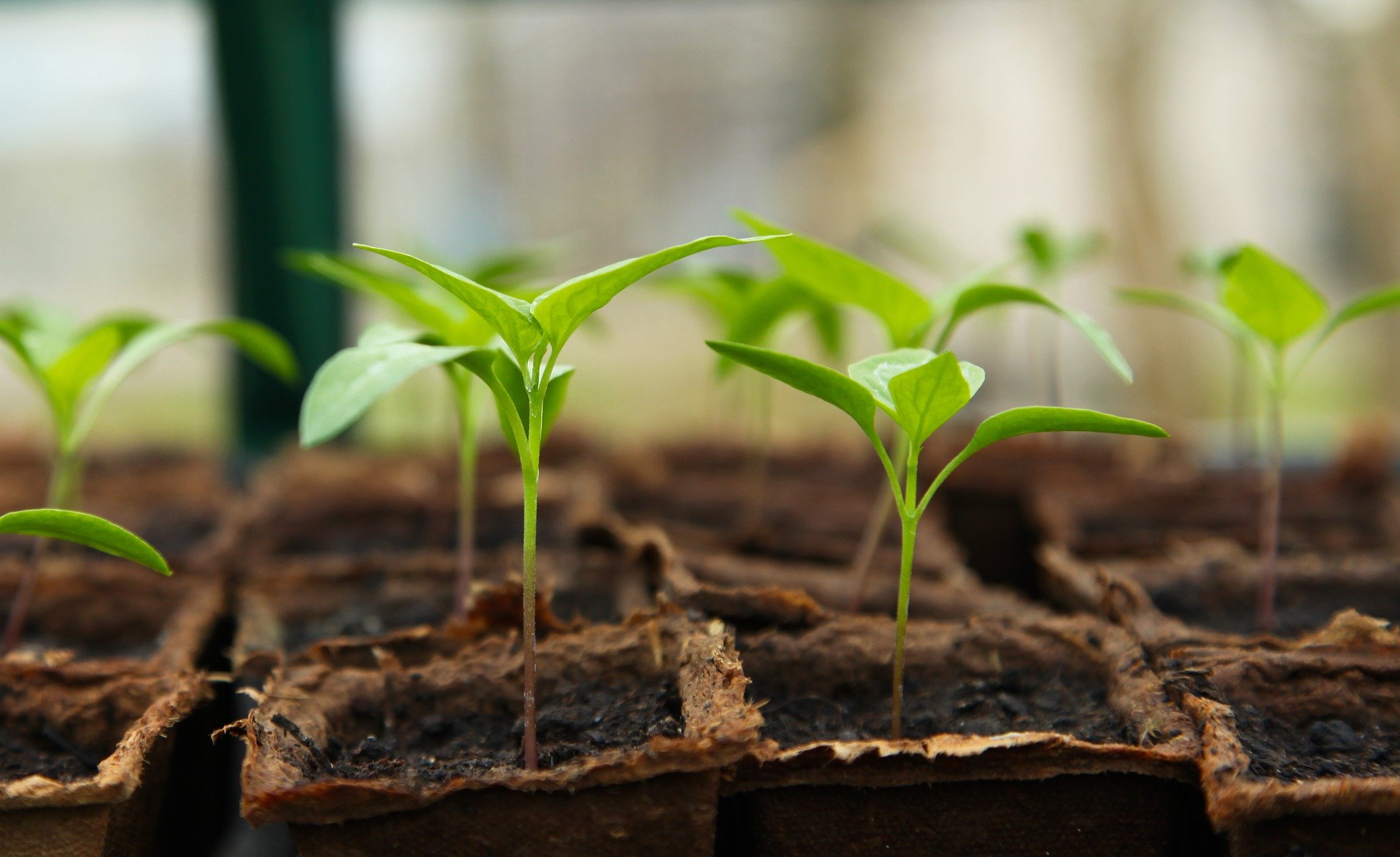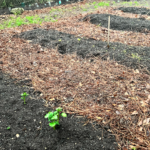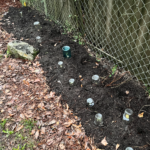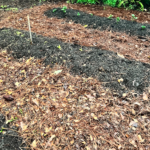One of our 2022 Eco Mini-Challenges is to start your own garden because growing your own food is a great way to be more sustainable.
From a waste perspective so much of our food, especially fresh produce, is packaged with petroleum based, single-use plastics. From the little stickers, to bags, to individually wrapped items, to unrecycleable clamshells for spring mix, and on and on and on and on.
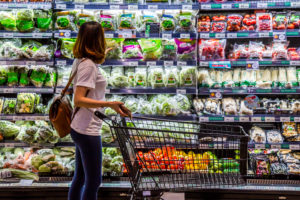
Gardening also connects you with your food, your farmer, and the earth. All wonderful and rewarding things, but for a lot of people it seems like a massive, overwhelming task.
Just remember, it doesn’t have to be. If it’s intimidating, start small. See what works one year, then build on that the next year.
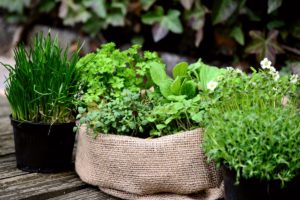
I’ll be honest, I’m an extremely novice gardener. But I have been learning a lot about permaculture recently and now, of course, that’s what I want. It’s what I must have. Like many of you, I’m also extremely busy with general life things and frankly, I want to relax when I get downtime (do hobbies sometimes feel like more work to you too?), so what I really want is a food-producing permaculture space in my backyard that will be relatively low maintenance in the long run.
Side Note: One big source of lazy gardener inspiration this year was Chapter 17 entitled Double the Food with One Tenth of the Effort in the book “Building a Better World in Your Backyard Instead of Being Angry at Bad Guys” by Paul Wheaton and Shawn Klassen-Koop. Chapter subtitles include:
-
-
-
- Transplanting? That’s Unnecessary Work
- Prepping the Soil to Not Need Prepping
- Planting Once and Harvesting for Years
- Mulching 2.0: Being Naked is No Longer Required!
- 3D Gardening – Big Berms Bring Big Benefits
- How Trees Nurture Gardens, Cool Your Home, Heat Your Home, and Save the World
- Replacing Fertilizer with Polyculture
- Monocrops Need Pest Control; Nature Doesn’t
-
-
This is my kind of gardening, for sure. Anyway, I thought I’d collect some of that information here for you, and speak a bit about my own venture and experience so you can experiment with a garden for yourself!
Step One: Start with a Plan
Planning really is the crux of starting a garden. You need to know what plants you’re going to attempt growing, and when they need to be seeded or put into the ground.
In Florida we’re lucky to have a little more leeway with our weather, but if you live further north this part is crucial. Plant too early and a hard frost will kill all your babies. Plant too late and you won’t get to harvest before the weather turns frosty again.
In general, you probably need to start sooner than you think.
Determine Your Gardening Space
The very first step is deciding how big you’re going to go. If it’s your very first time, try a container garden (meaning all of your plants will be in large pots.)
The advantage of a container garden is that it’s very impermanent. You can set out as many or as few pots as you’d like and you have the ability to move them around to find the best places in your yard or on the porch.
You can usually find a lot of secondhand pots on online marketplaces like Craigslist or Facebook Marketplace. And if you’re in Gainesville check out the Repurpose Project for pots.
If you’re thinking of going bigger, be sure you know whether your garden will be in direct sun all day or if it gets more shade.
You’ll also want to make sure wherever you garden can be reached by a hose, and won’t be disturbed by pets or small children.
Select What Plants You’ll Grow
Now look at your options.
One big thing to consider is what do you like eating? Some novice gardeners grow peas because someone said they were easy, but they don’t even like peas. Don’t do that.
Think about your favorite vegetables and herbs and select a number of them that match your garden conditions.
Then check out the recommended planting times for each of your selections and mark them on your calendar.
In Gainesville, we have a wonderful resource in UF IFAS and I did most of my research for my little beginner garden on their website.
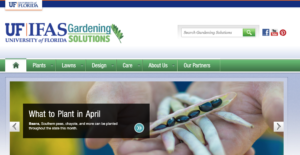
One warning to keep in mind: If you grow a lot of only one type of plant, say tomatoes, you’re likely to attract pests that will set up camp and gorge themselves on your poor tomatoes all season long.
To avoid this sad fate, try to plant a variety (called polyculture gardening) and consider mixing in flowers like marigolds and sunflowers that will deter certain insects and attract others that you want.
I went for tomato, roselle, arugula, cucumber, carrots, and potatoes for my main garden. Then threw some shade-loving seeds down around our sweet gum tree — basil, garlic chive, butterfly weed, thyme. And I plan to start more seeds soon for watermelon, cow peas, sunflowers and other pollinators in other parts of the yard now that it’s warmed up.
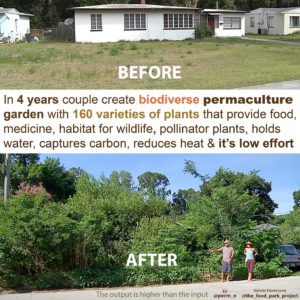
Step 2: Gather Supplies
I already had some seeds and ordered a bunch of others from Working Food (a Gainesville non-profit), but anyone can find seeds at nurseries, ag stores, and/or local “seed exchanges”.
Also, don’t discount all the seeds you already have access to! Most of the food you buy at the grocery store is full of viable seeds that can be planted (especially if you buy organic, non-gmo).
Learn how to Grow Fruits & Vegetables from Food Scraps! – EatingWell
I cut open a few tomatoes and used the seeds from them. I also used a few old red potatoes that had sprouted and they’re the happiest thing in my garden right now!
You’ll also want to make sure you have the gardening essentials: gloves, trowel, watering can, hose, pots, grow lamp. Keep in mind most of these items are available at second hand stores, Facebook Marketplace, Craigslist, or you might get lucky in your Buy Nothing group. Locally, we have The Repurpose Project (what an absolute treasure of a place, we are very lucky!). The point is to always repurpose and buy used when you can.
Step 3: Plant Your Seeds or Starters
If you’re starting from seeds, you’ll need to start them indoors. You could buy starter cups, but I think it’s more fun to repurpose things you may already have like cardboard egg cartons or even avocado skins. So many things would work, use your imagination!
The newly planted seeds need to stay moist and get good light, so this typically means covering with a clear top after watering and providing a grow lamp during daytime hours.
If you know you’ll have trouble remembering to turn the light on and off, you can buy a circuit timer that will do it for you.
Harden Your Plants
This is one of those steps that requires some experimentation, and in fact isn’t always necessary.
Basically your new baby plants have had a good life so far and they are therefore delicate and soft. That means they aren’t quite ready for the full harshness of the elements. If you buy seedlings from a nursery, this is also true.
Set them out for a few hours a day, or for longer in a more protected area like a screened porch. You want to do this for several days to a week.
Then they’re ready to be planted!
Plant Your Seedlings
If you want to avoid the plastic bags, but need garden soil and mulch, look for a local business in your area that sells it in bulk.
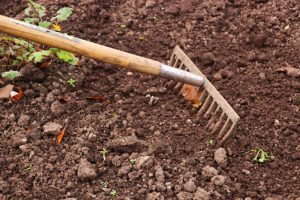
In Gainesville, we get soil from a place called Gaston Mulch and Soil and add a mineral soil booster and organic fertilizer. My husband has a pickup truck and can haul one yard in it, but they also offer delivery! (up to 10 yards at a time)
We go pick up our soil, unload it into a pile in the backyard and then we have it to use as we keep adding to the garden. So far we’ve ordered two yards, but I think I might be ready for a third.
I didn’t spend a lot of time prepping my yard. Basically, I lightly tilled the area where I wanted my “rows” with a shovel, but I did not have grass there. If you DO have grass I would recommend laying down cardboard first, then the dirt.
If you’re looking for a “lazier” setup (like me!), lay mulch between your plant rows to reduce the amount of weeding you’ll need to do.
I was able to “mulch” around the rows with pine straw from my front yard (we NEVER bag it, we just blow it all together around the trees and bushes lining the house, so it’s pretty great free mulch now), but again, look for a bulk supplier nearby!
Step 4: Maintaining Your Garden
When your plants are little you still want to protect them from harsh weather. If there are freezing temperatures or storms, try to cover your plants.
We were expecting some nasty thunderstorms recently, so I covered the little seedlings I was worried about with my jar collection. Bonus that the jars double as a quasi-greenhouse!
13 Tips for Plastic Free Gardening on the Cheap – Zero Waste Chef
Throughout the season you’ll want to water your plants in the morning, before the sun is too high in the sky. If you water midday you risk burning your plants, or having the water evaporate before your plants get as much as they need. If you water at night, you risk leaving too much moisture for too long and developing root rot or fungus and mold.
Adding a rain barrel is a great way to reduce your rain consumption (and something I will be setting up soon!) You can also save water from boiling vegetables or noodles and feed it to your plants for some extra nutrients.
And you can use your compost “tea” as fertilizer! (Mmm, right? 😉)
Keep an eye out for bugs. But remember not all bugs are bad. Predator insects like praying mantises, spiders, soldier beetles, and ladybugs will actually help protect your garden by eating the bad bugs like aphids. Remember, if nothing is nibbling at your garden (because of pesticides), you’re not truly part of the ecosystem.
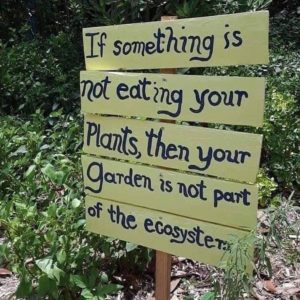
Reap the Harvest
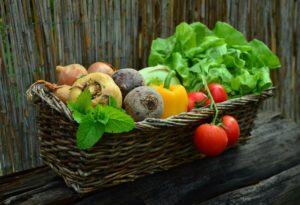
Finally, enjoy your fresh herbs and vegetables!
This is really the best part, so be sure to savor your hard work.
And if you do have garden success this year be sure to share it with us! Tag us on Instagram @unplasticgnv.
